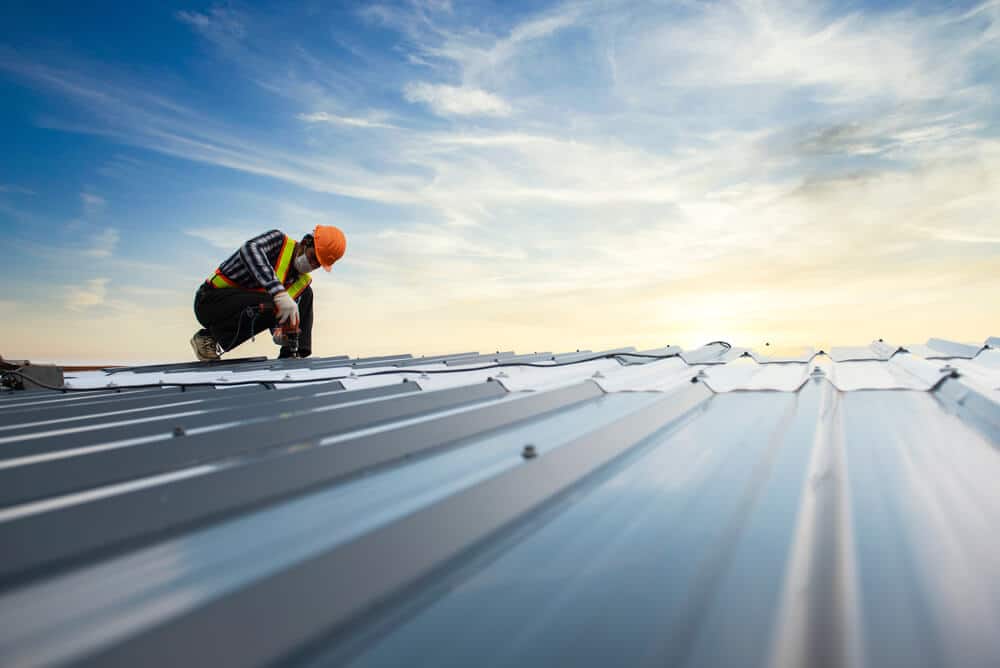Evaluating the Finest Roof Covering Materials for Replacement: A Comprehensive Evaluation of Resilience, Price, and Aesthetic Allure
Picking the right roof product for substitute entails a mindful evaluation of several essential elements, consisting of sturdiness, cost, and visual allure. The visual effect of materials like clay tiles can not be overlooked, regardless of their premium rate point.
Introduction of Roof Covering Products
As home owners progressively prioritize toughness and power performance, understanding the numerous roofing products offered for substitute ends up being important. The selection of roofing products directly influences not only the visual charm of a home but also its long-lasting performance and upkeep expenses.
Amongst the most common roof covering products are asphalt roof shingles, metal roof, and floor tile. Metal roofing, which consists of products such as steel and light weight aluminum, supplies extraordinary toughness and power effectiveness, often reflecting warm and minimizing cooling expenses.
In addition, more recent materials such as artificial shingles and eco-friendly roof are getting grip. Synthetic options resemble traditional products while providing boosted resilience and reduced upkeep demands. Eco-friendly roof coverings, which incorporate vegetation, add to energy performance and biodiversity.
Longevity Analysis
When assessing roof products for substitute, durability is an essential aspect that house owners should take into consideration. The life-span and strength of roofing materials directly influence lasting maintenance and replacement costs. Numerous products display differing levels of resilience, making it vital to understand their performance under environmental stress factors.
Asphalt shingles, while popular for their cost-effectiveness, typically last 15 to thirty years and may call for more regular replacement because of degeneration from UV exposure and severe weather. In contrast, steel roofing provides remarkable resilience, with a life expectancy of 40 to 70 years and resistance to wind, fire, and bugs. In addition, clay and concrete tiles can endure rough problems, usually lasting longer than 50 years, although their weight necessitates a durable structural support group.

Expense Contrast
Considering the monetary effects of roofing products is crucial for house owners intending a substitute. The expense of roof products can vary dramatically based on elements such as product kind, installment intricacy, and regional pricing distinctions.
Asphalt shingles are among the most economical options, normally varying from $90 to $100 per square (100 square feet), making them a popular option for budget-conscious property owners. On the other hand, steel roof covering can set you back between $250 and $700 per square, depending upon the sort of metal and coating picked. While metal roofing systems tend to have a greater in advance price, their long life and energy effectiveness may result in expense savings in time.
Clay and concrete ceramic tiles are additionally on the greater end of the spectrum, averaging between $300 and $600 per square. These materials supply toughness and aesthetic allure however require a considerable first financial investment.
Finally, slate roof, understood for its extraordinary durability and classic look, can vary from $600 to $1,500 per square, making it the most pricey alternative. House owners need to evaluate the first costs versus the expected lifespan and upkeep needs of each material their explanation to make a notified decision.
Visual Considerations
Visual factors to consider play a crucial role in selecting roof materials, as the roof dramatically impacts a home's general appearance and curb allure. Home owners frequently look for materials that match their building style and enhance the aesthetic allure of their residential property. The shade, appearance, and account of roof i loved this products can substantially affect the overall visual.
Products such as asphalt roof shingles supply a selection of colors and designs, making them a prominent selection for household projects. In comparison, steel roof gives a streamlined, modern-day appearance and is offered in countless coatings that can suit modern designs. Standard options like clay ceramic tiles or slate can evoke an ageless style, appealing to those who prefer classic appearances.
Homeowners need to additionally think about just how the chosen roof product connects with all-natural light, as this can affect the roof covering's look throughout the day. Ultimately, selecting cosmetically pleasing roof covering materials needs mindful consideration of individual preference, building style, and the overall vision for the home.
Final Recommendations
Choosing the appropriate roof product can considerably enhance a home's toughness and visual allure. roof replacement. Based on our analysis of sturdiness, cost, and visual variables, we suggest three primary alternatives for homeowners considering a roof replacement
Firstly, asphalt tiles remain one of the most popular choice because of their cost and flexibility. They supply a good balance of cost-effectiveness and protection, making them optimal for many domestic applications. Homeowners need to consider their longevity, as they typically last 15 to 30 years.

Last but not least, for those seeking a high end aesthetic, slate or tile roofing offers unequaled style and durability. These products come with a high price tag, their life expectancy can go beyond 100 years, making them a deserving financial investment for deluxe homes.
Ultimately, the very best selection will certainly depend upon individual budget plan, aesthetic choices, and regional climate considerations. House owners must talk to a roof covering specialist to analyze their certain requirements.
Final Thought
In final thought, choosing the suitable roof material necessitates a cautious assessment of toughness, price, and aesthetic allure. Asphalt roof shingles offer a cost-effective service with modest longevity, while metal roof covering succeeds in durability and power effectiveness.